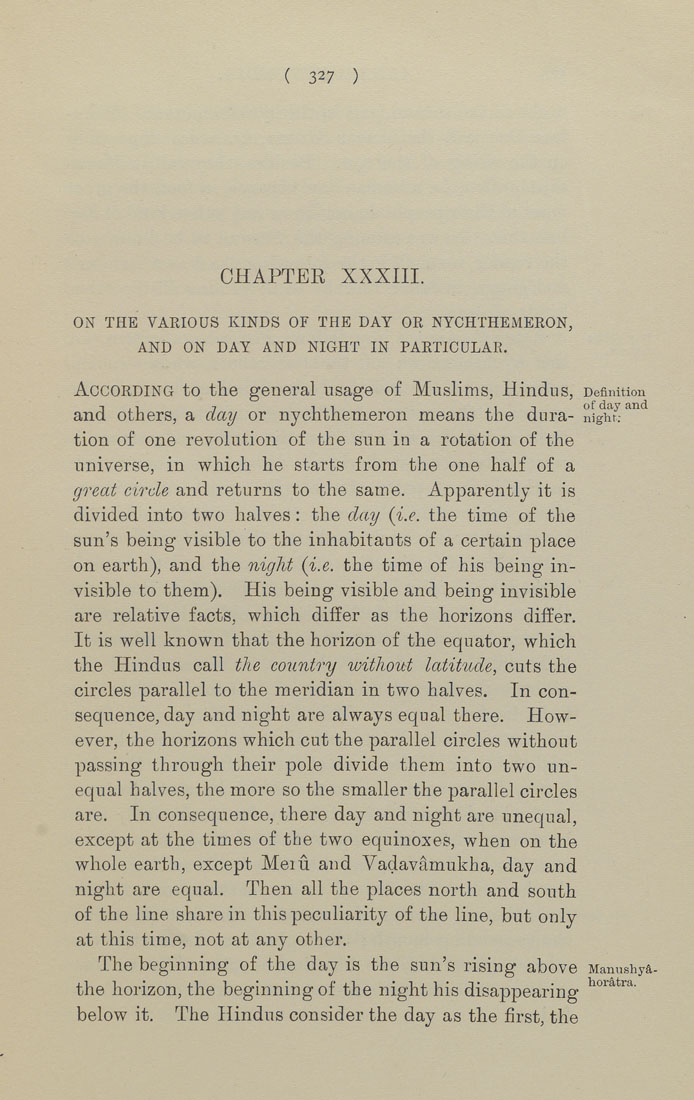Bīrūnī, Muḥammad ibn Aḥmad, Alberuni's India (v. 1)
(London : Kegan Paul, Trench, Trübner & Co., 1910.)
|
||
|
|
|
|
| Page 327 |

( 327 ) CHAPTER XXXIII. ON THE VARIOUS KINDS OF THE DAY OR NYCHTHE.MERON, AND ON DAY AND NIGHT IN PARTICULAR. According to the general usage of Muslims, Hindus, Definition and others, a day or nychthemeron means the dnra- nighn" tion of one revolution of the sun in a rotation of the universe, in which he starts from the one half of a great circle and returns to the same. Apparently it is divided into two halves : the clcty (i.e. the time of the sun's being visible to the inhabitants of a certain place on earth), and the night (i.e. the time of his being in¬ visible to them). His being visible and being invisible are relative facts, which differ as the horizons differ. It is well known that the horizon of the equator, which the Hindus call the country without latitude, cuts the circles parallel to the meridian in two halves. In con¬ sequence, day and night are always equal there. How¬ ever, the horizons which cut the parallel circles without passing through their pole divide them into two un¬ equal halves, the more so the smaller the parallel circles are. In consequence, there day and night are unequal, except at the times of the two equinoxes, when on the whole earth, except Mem and Vadavamukha, day and night are equal. Then all the places north and south of the line share in this peculiarity of the line, but only at this time, not at any other. The beginning of the day is the sun's rising above Manushya- the horizon, the beginning of the night his disappearing ^°''^*'^'*- below it. The Hindus consider the day as the first, the |
| Page 327 |







